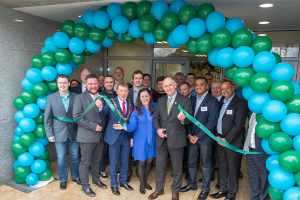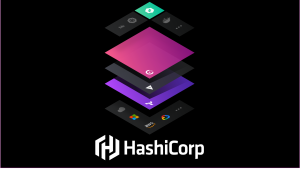The Basic QOS Myth: Myth# 3 of the Good-Enough Network
![]() Editor’s Note: This is a post by Michael Rau, Vice President, CTO, for the Borderless Network Architecture Cisco.
Editor’s Note: This is a post by Michael Rau, Vice President, CTO, for the Borderless Network Architecture Cisco.
Video conference calls, TelePresence, and even YouTube videos were mere science fiction just a decade ago. Now, thanks to many technological advances, we can easily talk to anyone across the globe in high-definition video from the comfort of our home or office. That is, if your network is truly ready for the demands of video.
If you’ve ever experienced fuzzy, choppy, or pixilated video, you know how annoying that can be. A network needs to be both fast and intelligent with enough bandwidth to handle video feeds, but also be smart enough to properly route network traffic so that video and data can flow.
With video projected to quadruple IP traffic by 2014 to 767 exabytes, according Cisco Visual Networking Index Forecast, this may be why so many IT managers are afraid of the strains it will put on their networks.
Is Your Network Ready for Video?
![]() Good-enough networks (those that are cobbled together with the cheapest equipment) operate on the notion that data is data—just ones and zeroes—while enterprise next-generation networks are built on innovative products that adjust in real time to the application being delivered and the endpoint device on which it appears.
Good-enough networks (those that are cobbled together with the cheapest equipment) operate on the notion that data is data—just ones and zeroes—while enterprise next-generation networks are built on innovative products that adjust in real time to the application being delivered and the endpoint device on which it appears.
With data, you can usually miss a few packets – if email takes a few seconds to download, it’s not a big deal. But with video, you can’t miss. If a video cuts out or a call has static, the experience is frustrating and you might as well go back to using a landline or sending an email.
The argument for a Good Enough network is that it can provide hop by hop Quality of Service (QOS) service to protect the video traffic. Unfortunately, basic QOS doesn’t offer the fine grain controls and visibility to successfully manage large scale video deployments. Something greater is needed to truly allow the network to respond to the demands of video.
Keeping up with video’s explosive growth means companies need to take a closer look at their bandwidth and endpoints. For an optimal user experience, video requires a network that is media-aware and can track and optimize video flows end-to-end. This way, video applications are treated like a presidential motorcade that requires other traffic to stop as it whizzes by.
Cisco’s Medianet technology understands the video endpoint, whether it’s a smart phone or a TelePresence unit. Additionally, products can auto-configure and tag the video flow with metadata so it can be prioritized across the routing and switching infrastructure, saving many hours of configuration and providing an optimal user quality.
Network administrators have an easy tool to inject synthetic video traffic into the network for preplanning video deployments. For real-time troubleshooting, tools like Cisco Mediatrace can inspect the video flow on a hop-by-hop basis as it traverses the network to identify congestion or other potential problems. Providing even greater visibility to the underlying capabilities of Medianet is a management tool called Cisco Collaboration Manager which simplifies the management and troubleshooting of video traffic.
Take, for example, an airport that is installing 6000 IP video surveillance cameras for better security. Setting up a new camera system on a good-enough network would be a nightmare because each device needs to be configured individually: tracking down each IP camera and locating where it is in network, and then configuring it individually. Medianet includes a feature called Media Services Interface (MSI), which automatically identifies devices and sets up the configuration and policies associated with each camera. This is an intelligent network adapting to our needs rather than the other way around.
MSI also provides an advanced signaling interface that allows for the creation of robust Call Admission Control (CAC) capabilities. MSI combined with the Resource Reservation Protocol RSVP, gives network managers the tools they need to build and manage large scale deployments or real time traffic. In some cases, video congestion just can’t be solved by “throwing bandwidth at the problem” and this is where the advanced QOS and CAC features of Medianet come into play.
We encourage organizations to look for built-in capabilities for advanced CAC and QOS across platforms. This results in significant savings and your network adapts to whatever traffic is coming through, not just video. While you may not see these savings if your focus is only on network connectivity or initial costs, you will as soon as you try to roll out any services or applications across the network.
Saving Lives (and Getting Smarter) with Networking and Video
![]() Doncaster & Bassetlaw Hospitals, a six-hospital network in the U.K., deployed Cisco TelePresence so that a stroke specialist at one location could examine a patient at another. The high-resolution video and audio allowed the doctor to observe stroke signs, like a droopy eyelid or slurred speech, more accurately than on a conventional video conferencing system.
Doncaster & Bassetlaw Hospitals, a six-hospital network in the U.K., deployed Cisco TelePresence so that a stroke specialist at one location could examine a patient at another. The high-resolution video and audio allowed the doctor to observe stroke signs, like a droopy eyelid or slurred speech, more accurately than on a conventional video conferencing system.
“In medicine, saving time ultimately saves lives,” said Andrew Clarke, IT manager for the hospital group.
Each minute a stroke goes untreated, two million of the brain’s total three billion cells are lost. The TelePresence system saves the hospital from 15 to 60 minutes in diagnosing strokes and this precious time is crucial in saving patients’ lives. Remote virtual expert support would not be possible or as reliable without the underlying resilient, media-aware next generation network…”
On the West Texas A&M University campus, CIO James Webb describes the transformation to a fully video-enabled campus as a “P2V effect,” plumbing-to-visual, meaning that the technology being implemented is visible to the end-users (no longer behind the scenes). This means students, instructors, administrators, and staff can fully take advantage of the new technology.
For WTAMU, it was clear that a Medianet architecture from Cisco would enable them to realize and scale the power of video. Next-generation teaching, learning, security, and communications on campus were realized thanks to Cisco DMS, MXE, and VSM. These tools offer the school the ability to leverage the network architecture to provide video solutions for the entire campus. Most importantly, the school can now provide the flexibility for students and faculty to be creative in their approach to education.
Webb wanted a 21st century enterprise video solution that was scalable and could integrate with the school’s existing IT infrastructure and could allow individual departments to manage and control their own content.
“The IT department has really focused on moving from an infrastructure and operations perspective to more innovation and highly visible creative solutions that break down the silos across the campus,” said Webb. “We now have the ability to streamline information into the campus and provide the students the information that they need.”
The pervasive video framework throughout the campus allows the school to target messages to students, according to Webb. He says the school has now incorporated video through its web presence, learning-management systems, created new digital-signage systems, video-enabled smart classrooms, and video conferencing.
Colleges, hospitals, and even nonprofits are benefitting from a network that can intelligently and adeptly handle today’s traffic–whether it be video or data – and grow to enable tomorrow’s needs. The next-generation network is not a barrier, but a way to save lives, inspire a new generation of leaders, and ensure that data can travel safely and efficiently.
Can you say that about your network?
Three myths down… four to go. Next week, we’ll cover the next myth: “application and endpoint ignorant .”
What are some of the “good enough” myths that you’ve been hearing in the industry?
Note: The seven myths are outlined in a recent white paper from Cisco: Debunking the Myth of the Good Enough Network.
A message from John Furrier, co-founder of SiliconANGLE:
Your vote of support is important to us and it helps us keep the content FREE.
One click below supports our mission to provide free, deep, and relevant content.
Join our community on YouTube
Join the community that includes more than 15,000 #CubeAlumni experts, including Amazon.com CEO Andy Jassy, Dell Technologies founder and CEO Michael Dell, Intel CEO Pat Gelsinger, and many more luminaries and experts.
THANK YOU











